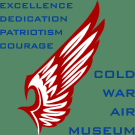The museum made a FOIA request to the US government a while back and Rob Young, a historian at the National Air and Space Intelligence Center was kind enough to include a PowerPoint presentation on Have Doughnut in the FOIA package we got back from the government.
The US Government has a systematic program for declassification of material over time and so information on Have Doughnut is approved for public release (and has been for some time). We've placed a PDF of the briefing here if you'd like to look at the whole thing. While the US has a program for declassification, some other countries do not, including the country, or countries that may, or may not, have "helped" the US obtain the MiG-21... so where we got it from is still a big secret.

AFSC instrumented the MiG-21 and flew it here in the US, but exactly where is still another big secret. AFSC made 102 flights in 40 days of flying, and here's what we learned:
The MiG-21 is a simple, honest aircraft that's easy to fly.
It was very reliable and easy to maintain — relative to the maintenance squawks that the US aircraft flying against it racked up, the MiG was "put gas in it and go".
The main advantage of the '21 was that it was a small aircraft, difficult to spot visually, and left no smoke trail except for a small puff of fuel/smoke when going in or out of afterburner; in fact, the twin black plumes of the F-4 escorting the MiG was usually picked up long before pilots saw the MiG.
The MiG had very low wing loading (meaning it didn't bleed airspeed in a turning fight) and a unique lacquer coating system for corrosion protection. The museum is currently enjoying the benefits of that system as our MiG-21 has little to no corrosion even 30 years after it was produced.
There were a few prominent shortcomings including low visibility, slow engine response, and low altitude transonic vibration.

As a result of their experiences in Have Doughnut, the Navy created the famous Top Gun program in 1969 and had good results when they encountered the aircraft over Vietnam. The Air Force eventually created the Red Flag program for similar purposes.
After Have Doughnut was over, the aircraft was disassembled and returned to whence it came... wherever that might have been. :-)
For further reading, the book Red Eagles was published in September 2008.



No comments:
Post a Comment